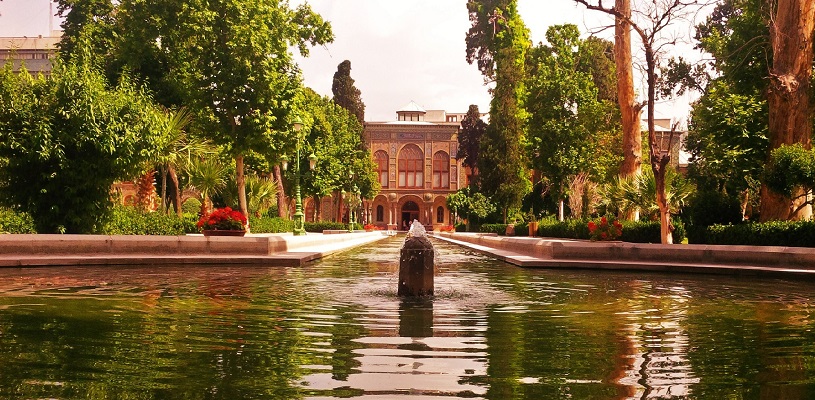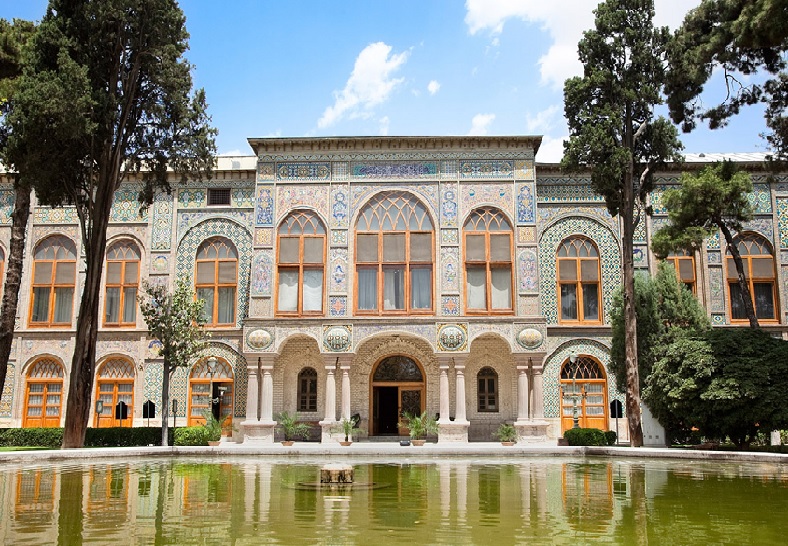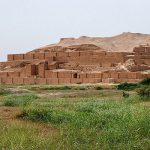
Golestan Palace | Museum in Tehran, Iran (Gulistan Palace)
Located in the center of Tehran, Golestan Palace (Kakh Golestan or Gulistan Palace) is one of the palaces of Zand and Qajar era. There are many historical monuments in Tehran, but this 440-year-old site is one of the most famous and oldest buildings in Tehran. Because of these impressive features, it is better to give Golestan palace a high priority to visit.
Golestan palace is located in the middle of a large garden which has provided an attractive view for visitors. One of the important features that you can see everywhere in the Palace, is heterogeneous architecture. This feature is visible in every corner of the palace. And in the end, these unique privileges led to the registration of this magnificent building in the UNESCO World Heritage List. Follow me to learn more about this wonderful palace.
Contents
- 1 Why visit Golestan Palace?
- 2 The Story of Golestan Palace
- 3 Golestan Palace Architecture
- 4 Buildings in Golestan Palace
- 5 Shams-ol-Emare – Golestan Palace
- 6 The Iwan of Marble Throne – Golestan Palace
- 7 Golestan Palace Mirror Hall
- 8 Diamond Hall – Golestan Palace
- 9 Wind Catcher Hall – Golestan Palace
- 10 Photo House – Golestan Palace
- 11 The Special Museum
- 12 More about Golestan Palace
- 13 Like to see Golestan Palace?
- 14 Gulistan Palace Tour
- 15 Kakh Golestan (Golestan Palace) on Map

The Facade of Golestan Palace
Why visit Golestan Palace?
- Golestan Palace is on the UNESCO world heritage list.
- Golestan Palace palace is an example of a combination of Iranian and European architecture.
- It is not possible to find a similar to this palace’s tiling somewhere else.
- It is one of the famous places in Tehran for photography.
- Shams-ol-Emare building, which is located in this complex, is the first building made of metal in Iran.

Tiling in Golestan Palace
The Story of Golestan Palace
The original foundation of Golestan Palace dates back to the Safavid era but today there is no sign of it. Today least of the existing items of the Palace are some works and buildings from the Zand era. And most of them belong to the Qajar era. It is said that due to locating this complex in a garden and the existence of long streets with lots of trees around it, it has been named Golestan (a place with gardens and trees). You should know, this is just a guess and it is still ambiguous. For many years this complex has been a host to kings and a number of Qajar kings have lived in it.
Golestan Palace Architecture
Golestan Palace is a historical building that consists of several halls. And all the parts are located in a large and wonderful garden. As a matter of fact, there is a large pool in the middle of the garden. This pool is surrounded by many historical and luxurious buildings. An interesting point about the architecture of the Palace is that a combined style is used in the construction. On one hand, at the time of the construction of the Golestan palace Iran was in a political situation that was influenced by European architecture. On the other hand, each part of the palace was built by order of a different king and was restored in a special way in the current era.
Because of the mentioned reasons there are clearly different architectural styles in Golestan Palace. This collection shows a special combination of Iranian and European architecture. Unique architecture, magnificent halls, spectacular mirrors, a stunning garden, and many other features of this complex can make a special experience for you.

Art in Golestan Palace
Buildings in Golestan Palace
There are several buildings in Golestan palace. Each of these features has been added to this complex at a certain time and by the order of the kings. By knowing the history of the buildings, you’ll find out that they built each hall for a special purpose. Among the buildings in this complex, we can name Shams-ol-Emare, Ivory Hall, Salam Hall, Mirror Hall, Karim Khani Nook, Diamond Hall, Building of Wind catcher, Photo House, White Palace, Brilliant Hall, and the Museum. In the following, we will review some parts of this complex.
Shams-ol-Emare – Golestan Palace
Shams-ol-Emare (The Sun Building) is the tallest and the most prominent building in Golestan palace. The story of this building, which was previously considered a symbol of the capital, dates back to the time of a Qajar king, Naser al-Din Shah. The king’s interest in the skyscrapers and high buildings of western countries encouraged him to create this building. So from this, he and his wives could see the landscape of Tehran and the surrounding area. The building has five floors and the shape of it is based on the foreign buildings‘ model. Shams-ol-Emare is the first metal building in Iran. By entering the building, you will see beautiful mirror work, paintings, and plastering.

Sham-ol-Emare Building in Golestan Palace
The Iwan of Marble Throne – Golestan Palace
It is an outstanding iwan in Golestan palace. This iwan is very eye-catching with plastering, stone carving, inlay work, mirror work, wood carving, and lattice work. The construction of this iwan dates back to the Zand era. During the Qajar era, it was a place where kings ascended the throne and held official ceremonies and festivals. The iwan or marble throne was the place where kings held the greeting ceremony in the presence of different classes of people.

The Iwan of Marble Throne – Golestan Palace
In 1799 AD, a Qajar king ordered the famous stone carvers of Isfahan to make a marble throne for the Golestan palace. The king wanted that throne to always remain in the middle of the iwan. The carvers used 65 pieces of large and small marble to make this throne.

The Marble Throne in Golestan Palace
Golestan Palace Mirror Hall
A mirror hall is a large, rectangular space with mirrored and crystallized ceilings and walls. In addition to the decorations, the main reputation of this Hall is mostly due to the famous oil painting of Kamal-ol-Molk (an outstanding painter), which is now in Salam Hall. The Peacock throne, which Nader Shah Afshar brought to Iran, was also in this hall but now it’s in Jewelry Museum.

Mirror Work in Golestan Palace
Diamond Hall – Golestan Palace
Diamond Hall is located in the south of Golestan Palace. To decorate and beautify the hall, they used Unique mirrors and muqarnas. According to some historians, the reason for naming this hall is the form of mirror work (which are like diamonds) on the south iwan, with unique mirror work and Orosi (colored-glass window), this part is the most gorgeous part of the hall. These details increase the beauty of the building in such a great way.
Wind Catcher Hall – Golestan Palace
In the south of Golestan Garden, there is a tall building. Due to the high wind catchers above it, this building is known as the Wind Catcher Hall. This building was very important and usually, the cabinet held meetings there. There are pillars, walls, Orosi, and a beautiful ceiling in this hall. They are covered with beautiful paintings, gilding, plastering, inlay work, and marble. This hall has a stunning view. The main part of this building is its alcove, where there are nine beautiful Orosi. Below the hall, there is a large pool and in the four corners of the pool, there are four tall wind catchers to cool the building. Qajar kings usually used this area if they were in Tehran during the summer.

Wind Catcher Building in Golestan Palace
Photo House – Golestan Palace
There is a large pool house under the wind catcher hall. You should know that the photo house and the pool house are the same. Actually, this part of Golestan palace is like a giant album full of historical photos of the Qajar era. Photographic equipment that belongs to that era also exists here. Nasser-al-Din Shah, a Qajar king who was interested in photography, took lots of photos. So those photos and the photographs of his handwriting are here.
The richest collection of photographs in the world is available in Golestan palace. This section is one of the most important repositories in the world. In fact, it is the second repository of photos and videos in the world after the British Museum. Color or black-and-white photographs of travels, ceremonies, wives, and the private life of kings are here. The photo House is about 170 years old.
The Special Museum
From the Qajar period until the end of this dynasty, this building was a storage in the Golestan palace. It was for the presents that kings of European countries gave them. This building became a special museum during the reign of a Pahlavi king, Mohammad Reza Shah. All the gifts of European kings were transferred to this place. Other valuable items in this museum include the armor of Shah Ismail Safavid, the bow and arrow of Nader Shah Afshar, the crown of Agha Mohammad Khan Qajar, etc. Another unique treasure that is available in this palace is the library of manuscripts.

Golestan Palace Museum
More about Golestan Palace
Visit Hours
Spring and Summer: 9:30 a.m. to 6:30 p.m.
Fall and Winter: 9 a.m. to 5 p.m.
Visit Days
Every day except some holidays
Where to Eat Near Golestan Palace
Moslem Restaurant
Nearby Attractions
You can visit beautiful attractions near Golestan palace. Some of these places are Mostowfi ol-Mamalek house which is an elegant historical house. Tehran Grand Bazaar where you can buy various goods and enjoy the atmosphere and the special architecture. City park that is an old park where you can enjoy the lively vibe.
Sharaf Eslami Restaurant
Shamshiri Restaurant.
Like to see Golestan Palace?
Then join our Top Museums of Tehran tour or one of our multi-day Cultural Tours.
Kakh Golestan (Golestan Palace) on Map
Keywords: Gulistan Palace, Golestan Palace Tehran, Golestan Palace Mirror Hall, Golestan Palace Facts, Golestan Palace History








